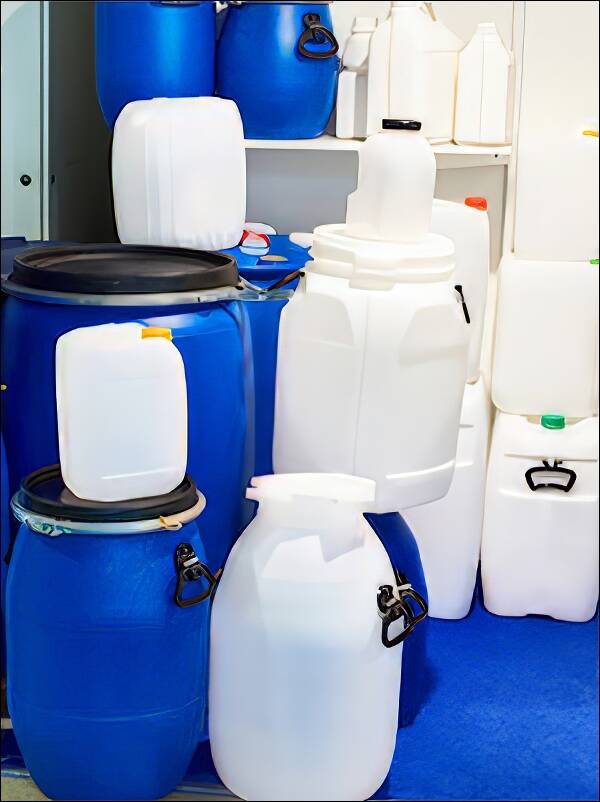Of all the things you need to survive a major disaster, water may be the most precious. The average person can go three weeks without food, but most people will be in life-threatening trouble if they go three days without water.
There are many variables at play when determining how long a person can go without food and water, so those are just general guidelines. For example, it may be very hot or you might be at risk for health reasons, increasing your water needs.
The fact remains that even just a few days without safe drinking water will bring you down.
That’s why VashonBePrepared is thinking about water for this month’s Prepare in a Year project. In this article, we’ll work on how to store water. Next issue, we’ll cover how to purify water.
What could go wrong?
If you’ve ever had a home plumbing emergency — such as a burst pipe — you understand that pipes are not 100% failsafe. Just in the last year, two of the island’s water providers had major pipeline breaks that shut down water to many homes. And those failures took place on calm days with no ground-shaking earthquakes. One was caused by a maple tree growing up against a pipe, and it caused a 400,000-gallon leak.
A broken pipe might stop water flowing to your house or cause contamination. So, if your water looks dirty, it may be a sign that a water pipe has broken allowing contamination into the line. That’s a good reason to store water; you don’t want to use questionable water. It’s bad enough that you are up against a disaster — don’t add water-borne illness to your woes.
Here’s some good news. Vashon has many sources of safe drinking water, including seven large providers and over 100 smaller systems, plus many household wells. The odds are good that there will be a source of safe water if your usual source goes down. It may not be piped to your home, but there will be water available somewhere on the island. However, it could take a week or two to organize emergency water distribution. Until then, you’re on your own. That’s why you want to store enough water for your household.
How much water should you store?
How much water do you need? Preparedness experts advise us to store one gallon per person per day, just for drinking and cooking. As we discussed last month, VashonBePrepared recommends storing enough critical supplies such as water and food to last three weeks.
That adds up to a minimum of 21 gallons of water per person in your household. Even more water would be needed for hand-washing, dish-washing, pets and livestock, flushing toilets, and other essential needs.
How do you store water safely?
If you follow the recommendation above, that’s a lot of water to keep on hand. Keep in mind that you need to be able to drink the water, so it must be stored safely.
- Use new or very clean containers that have never held toxic substances. But don’t repurpose plastic milk jugs. They don’t seal well after their original use, and the plastic becomes brittle too quickly. Also, think twice before storing water in glass. Glass can break and it weighs a lot if you have to move it.
- Weight is a big issue when storing water because water weighs about eight pounds per gallon. A five-gallon container would weigh more than 40 pounds. You’ll want to be able to heft a water container to get it where you need it for use, perhaps from your emergency cache to your kitchen or into your car.
- Consider using a big-to-small strategy. You can store a big supply of water in 30- or 55-gallon drums designed for long-term water storage. Get a hand pump or siphon so you can fill smaller, easy to transport, containers.
- To find bargains for long-term water storage containers, search Google for “emergency water storage.” You will get dozens of listings for food-grade polyethylene containers, including prepper supply stores, Dick’s Sporting Goods, REI, Amazon, Costco, and so on.
- Think about including some bottled water for urgent use immediately following an emergency. Single-serving-sized bottles are easy to carry and instantly available.
- Make sure your water is from a tested source before you store it. You want to be able to rely on safe water in an emergency, so it makes no sense to store questionable water.
- Rotate your stored water every year or so. The water will taste better and you can be more confident of its safety. (Some sources recommend rotating every six months.)
- Store your water where you can access it, even during an emergency that damages your home or garage. It’s a good idea to share the water between two locations, so if one is damaged the other may still be accessible.
- Store water where it won’t freeze, and thus crack the container, during an extended cold snap.
- Conserve your precious supply of safe drinking water by having additional non-potable water on hand that doesn’t need to be purified. You can use that water to flush toilets or keep special plants watered until regular water service is restored.
A water barrel set to collect rainwater from your roof could be very helpful for the above purpose. Keep in mind that roofs are not clean, often contaminated by birds or other animals, and by seasonal pollen and windblown dust. Some roofing materials may also contain impurities that are difficult to remove.
If there’s a need to make clean drinking water from rain barrels containing roof runoff, the water can be mechanically filtered for large particles, and then filtered again with reverse-osmosis camping filters.
We’ll be back next week with more information on purifying water so it is safe for drinking and cooking.


